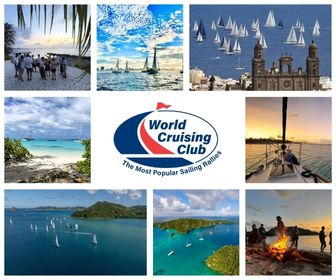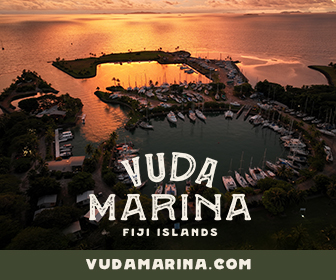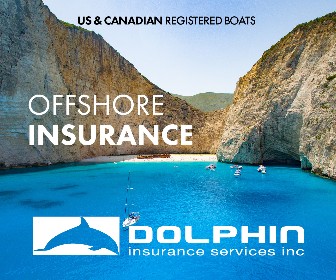South Pacific: Dengue Fever Continues to Spread
Dengue fever cases in the Pacific are at their highest since 2016, with nearly 19,000 people affected across many island nations including Samoa, the Cook Islands, Tonga, Fiji and French Polynesia according to the World Health Organisation (WHO).
Published 4 months ago
Mosquito-borne Virus
Dengue Fever is a viral infection transmitted to humans through the bite of infected mosquitoes. According to the World Health Organisation (WHO), about half of the world’s population is now at risk of dengue with an estimated 100–400 million infections occurring each year.
The WHO’s Pacific Technical Support director Dr Mark Jacobs said that July regional data showed the number of suspected dengue cases was at 18,766 – the highest since 2016.
“We’ve been seeing a gradual increase in dengue in the Pacific for at least the last couple of decades. But looking at the last 10 years, what we tend to see is peaks in some years and then lower levels in other years,” he said.
“This year, so far, we’re up to two more than 18,000 suspected cases of dengue, that’s the biggest number that we’ve had certainly in the last 10 years. Of those, 12,040 were laboratory-confirmed cases.”
WHO said data for the Pacific showed the number of cases of Dengue Fever appeared to have peaked in March. However, in recent months, there had been a resurgence in spread of the virus with outbreaks in the Cook Islands as well as in previously unaffected nations including Nauru and Tuvalu. There had also been a case reported on remote Pitcairn Island.


Samoa Closes Schools
In Samoa the government has closed all schools after the deaths of two children and a nationwide school fumigation campaign has been launched to disrupt mosquito breeding and slow the spread of the virus, particularly among children.
Alongside the government-led fumigation, villages across Samoa have also taken initiative by organising community clean-ups to destroy mosquito breeding sites. Islanders are clearing rubbish, draining stagnant water from tires, containers and tarps and removing decorative plants like bromeliads that collect water.
Tonga Working to Combat Dengue Fever
Since Tonga declared an outbreak on 19 February 2025, the country, with just over 100, 000 people, has recorded 845 confirmed cases and three dengue-related deaths. Cases have been reported on four main islands, with the highest numbers in Vava’u and Tongatapu, which includes the capital, Nuku‘alofa.
To combat dengue effectively, Tonga’s Ministry of Health and WHO are working together to improve the reporting and tracking of dengue cases, with an emphasis on early recognition of severe dengue warning signs.
Standard Health Precautions in Fiji
The highest number of cases has been reported in Fiji and the country’s Ministry of Health government is continuing to advise visitors “to take standard health precautions” during their stay in the country, as local authorities try to tackle the dengue outbreak.
WHO Prevention and control advice for Dengue Fever
The mosquitoes that spread dengue are active during the day. Lower the risk of getting dengue by protecting against mosquito bites by using:
- clothes that cover as much of your body as possible;
- mosquito nets if sleeping during the day, ideally nets sprayed with insect repellent;
- window screens;
- mosquito repellents (containing DEET, Picaridin or IR3535); and
- coils and vaporizers
If you get dengue, it’s important to:
- rest;
- drink plenty of liquids;
- use acetaminophen (paracetamol) for pain;
- avoid non-steroidal anti-inflammatory drugs, like ibuprofen and aspirin; and
- watch for severe symptoms and contact your doctor as soon as possible if you notice any.
…………………………………
Related News:
- Biggest Number We’ve Had – Pacific Dengue Cases Highest in a Decade (Radio New Zealand)
- Dengue Response – Nationwide Fumigation Beings (Samoa Observer)
- Samoa Shuts Schools as Dengue Fever Surges (NZ Herald)
- How Tonga and the WHO are joining forces to strengthen Dengue Outbreak Response (WHO)
…………………………………
Related Links:
…………………………………
Noonsite has not independently verified this information.
If you have found this information useful, become a paid member to enjoy unlimited use of Noonsite plus many other perks. Your membership fees really help our small, dedicated team keep country information up-to-date in support of cruisers worldwide. Find out more about Noonsite Membership levels and benefits here.
Subscribe to our FREE monthly newsletter: https://www.noonsite.com/newsletter/
Related to following destinations: Aitutaki, American Samoa, Apia (Upolu), Atiu Island, Cook Islands, Daku Bay, Fiji, Fulaga (Vulaga), Kadavu, Kavala Bay, Lakeba, Lau Group, Lautoka (Vuda Point Marina), Levuka, Lifuka (Ha'apai), Mamanucas and Yasawas, Manihiki, Matuku, Musket Cove, Neiafu (Vava'u), Niuafo'ou Island, Niuatoputapu Island, Northern Group (Cook Islands), Nuku'alofa (Tongatapu), Oinafa, Ovalau, Pacific Harbour, Pago Pago, Palmerston, Penrhyn, Port Denarau, Pukapuka, Rarotonga, Rotuma, Salelologa Harbour (Savai'i Island), Samoa, Savusavu, Somosomo, Southern Cook Islands, Suva, Suwarrow, Taveuni, Tonga, Vanua Balavu, Vanua Levu, Viani Bay, Viti Levu, Vunisea, Western Samoa
Related to the following Cruising Resources: General, Links to Travel Advice, Medical, Safety and Medical








